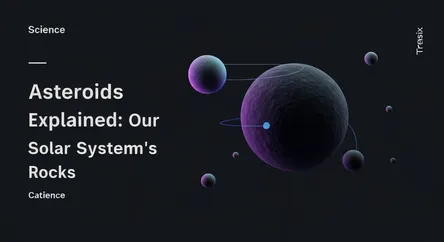Science
Asteroids Explained: Our Solar System's Rocks

Discover asteroids, the rocky remnants from our solar system's birth. Learn why they're trending and how they impact life on Earth.
What is it?
Asteroids are rocky, airless objects that orbit the Sun but are too small to be called planets. They are leftovers from the formation of our solar system about 4.6 billion years ago. The vast majority are found in the main asteroid belt, a region between the orbits of Mars and Jupiter. They range in size from Vesta, the largest at about 530 kilometers in diameter, to bodies less than 10 meters across. Composed mainly of rock and metals, these celestial wanderers hold vital clues about the early conditions and building blocks of the planets.
Why is it trending?
Interest in asteroids is surging due to groundbreaking space missions. NASA's DART (Double Asteroid Redirection Test) mission successfully demonstrated humanity's ability to alter an asteroid's path, a crucial step in planetary defense. Furthermore, missions like OSIRIS-REx, which returned samples from the asteroid Bennu, are providing unprecedented insights into the composition of these bodies and potentially the origins of life on Earth. These missions capture public imagination and highlight our advancing technological capabilities in space.
How does it affect people?
While a major impact is rare, asteroids known as Near-Earth Objects (NEOs) pose a potential threat. Scientists constantly track them to assess any risk, leading to the development of global planetary defense strategies. On the other hand, asteroids are also seen as a future resource. They contain valuable minerals like iron and nickel, and in the future, they could be mined for materials needed for space exploration and construction, potentially fueling a new space-based economy. They are a source of both scientific wonder and practical concern.